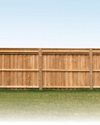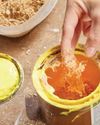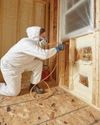
When you're choosing basement flooring, style and comfort matter, but your top consideration should be how well it can handle moisture.
As a starting point, you need to determine if there are any moisture issues in your basement. Obvious sources would be leaking pipes, water heaters, laundry tubs and floor drains, but there are also less obvious ones, such as moisture coming in through the foundation.
If you notice moisture entering through the foundation, you'll likely need to address the drainage around your home's exterior. Moisture coming in through the slab is less obvious; you'll need to run a test. Your flooring installer can do this for you, or you can perform the test on p. 53. If there's a moisture problem, the concrete must be sealed before you install any type of flooring.
The flooring you choose for a basement must be rated for below-grade installation. If you're not sure, check the product information and the manufacturer's website.
CARPET
Many people install carpet in basements because it makes the concrete floor warmer and more comfortable. That's a fine goal, but never make the mistake of installing carpet and underlayment directly on basement concrete. One reason is summertime mustiness. When humid summer air enters the carpet pile and comes close to the concrete underneath, that air can cool to the dew point, releasing fine droplets of water within the carpet or underlayment. That's why finished basements smell musty.
Diese Geschichte stammt aus der March 2023-Ausgabe von Family Handyman.
Starten Sie Ihre 7-tägige kostenlose Testversion von Magzter GOLD, um auf Tausende kuratierte Premium-Storys sowie über 8.000 Zeitschriften und Zeitungen zuzugreifen.
Bereits Abonnent ? Anmelden
Diese Geschichte stammt aus der March 2023-Ausgabe von Family Handyman.
Starten Sie Ihre 7-tägige kostenlose Testversion von Magzter GOLD, um auf Tausende kuratierte Premium-Storys sowie über 8.000 Zeitschriften und Zeitungen zuzugreifen.
Bereits Abonnent? Anmelden

7 Bicycle Maintenance Tips
Keep your bike in tiptop shape and ride safe!

SETTING FENCE POSTS WITH EXPANDING FOAM
Any fence builder knows you need strong posts for a strong fence, and that means backfilling the postholes with a dense, hard material other than dirt.

PEBBLE MOSAIC STEPPING STONES
COLLECT SOME RIVER ROCK AND MAKE YOUR OWN UNIQUE STEPPINGSTONE PATH

EARTH-FRIENDLY WEED KILLERS
HEALTHIER CHOICES FOR HUMANS AND THE ENVIRONMENT

DIY! HYDROPONIC GARDEN
FRESH VEGETABLES AT YOUR FINGERTIPS

GROW MINI VEGETABLES
GROW A GARDEN IN A TINY SPACE!

BUILD A VERTICAL GARDEN
TIME TO GROW UP!

MODERN WATER FOUNTAINS
A SPLASH OF PEACE FOR YOUR PATIO

9 ALTERNATIVE USES FOR SAWDUST
Every fully stocked wood shop has a table saw. You can usually find a pile of sawdust under it, even if it's used only occasionally. If a shop has a belt sander or band saw, there's probably another pile of finer sawdust under that. Even people without stationary tools have sawdust accumulation on their workbenches.

INSULATE WITH FOAM
IT'S A GREAT ALTERNATIVE TO FIBERGLASS